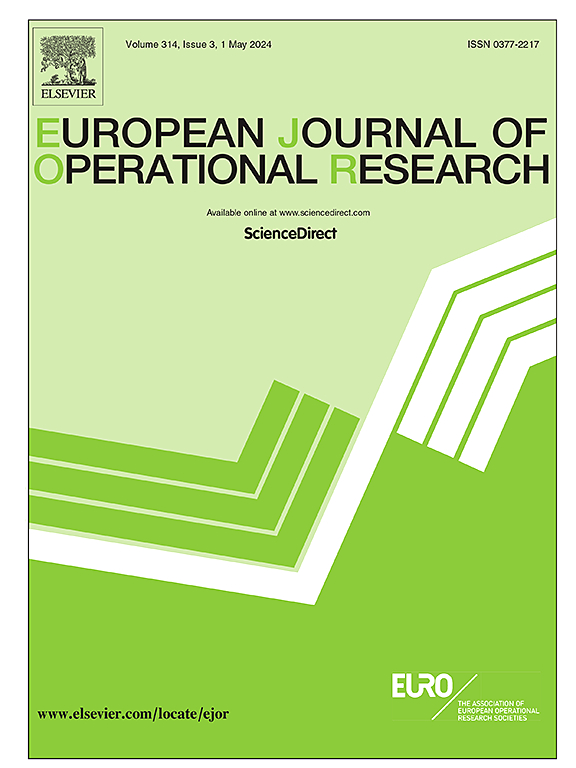本地能源市场需求响应的反向Stackelberg模型
IF 6
2区 管理学
Q1 OPERATIONS RESEARCH & MANAGEMENT SCIENCE
引用次数: 0
摘要
在可再生能源越来越多地融入我们的电力系统,以消费者为中心的方法越来越受欢迎的时代,当地能源市场成为赋予产消者权力的关键机制。本文提出了一种新颖的双层优化模型,该模型独特地将点对点能源市场的动态与配电网的物理现实相结合。这项创新源于引入一种基于仿射函数的电价设计方法,以塑造产消费者行为,实现高效和安全的能源交换。这是至关重要的,因为以前的市场设计往往忽视了电力流动的物理限制,导致电压调节和经济效率的潜在风险。该模型的较低层次将产消者之间的相互作用封装在广义纳什均衡问题(GNEP)中,对产消者的主动和无功功率注入进行建模。上层代表分配系统运营商的角色,战略性地计算电价,以引导市场达到运行效率的平衡。本文依靠经典的Nikaido-Isoda (NI)重新表述来表征GNEP,这是利用低级解的强稳定性证明的关键方面。在各种IEEE测试馈线实例上的计算实验表明,该模型能够有效地将产消行为与运营目标结合起来,仅利用电价信息,从而简化复杂配电系统中的决策过程。本文章由计算机程序翻译,如有差异,请以英文原文为准。
A reverse Stackelberg model for demand response in local energy markets
In an era where renewable energy resources are increasingly integrated into our power systems, and consumer-centric approaches gain traction, local energy markets emerge as a pivotal mechanism for empowering prosumers. This paper presents a novel bilevel optimization model that uniquely blends the dynamics of peer–to–peer energy markets with the physical realities of power distribution networks. The innovation steems from introducing a tariff design approach based on affine functions to shape prosumer behavior towards operationally efficient and secure energy exchanges. This is critical as previous market designs often overlooked the physical constraints of power flows, leading to potential risks in voltage regulation and economic efficiency. The lower level of the model encapsulates the interactions among prosumers in a generalized Nash equilibrium problem (GNEP), modeling active and reactive power injections of prosumers. The upper level, representing the role of the distribution system operator, strategically computes tariffs to steer the market to an operationally efficient equilibrium. The paper relies on the classical Nikaido–Isoda (NI) reformulation to characterize the GNEP, a key aspect in leveraging a proof of strong stability of the lower–level solution. Computational experiments on various IEEE test feeder instances reveal the model’s capacity to efficiently align prosumer behavior with operational objectives, utilizing only the tariff information, thereby simplifying the decision-making process in complex distribution systems.
求助全文
通过发布文献求助,成功后即可免费获取论文全文。
去求助
来源期刊

European Journal of Operational Research
管理科学-运筹学与管理科学
CiteScore
11.90
自引率
9.40%
发文量
786
审稿时长
8.2 months
期刊介绍:
The European Journal of Operational Research (EJOR) publishes high quality, original papers that contribute to the methodology of operational research (OR) and to the practice of decision making.
 求助内容:
求助内容: 应助结果提醒方式:
应助结果提醒方式:


